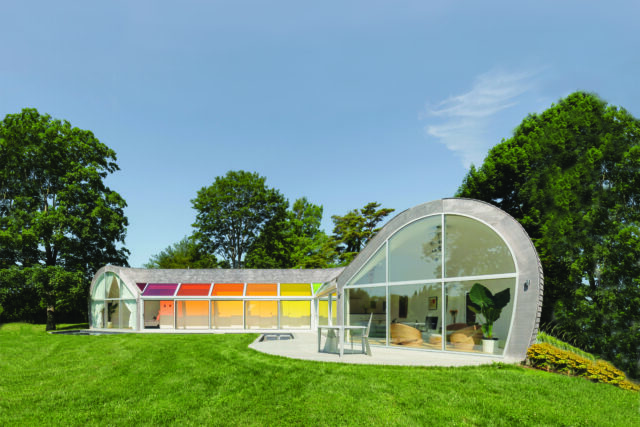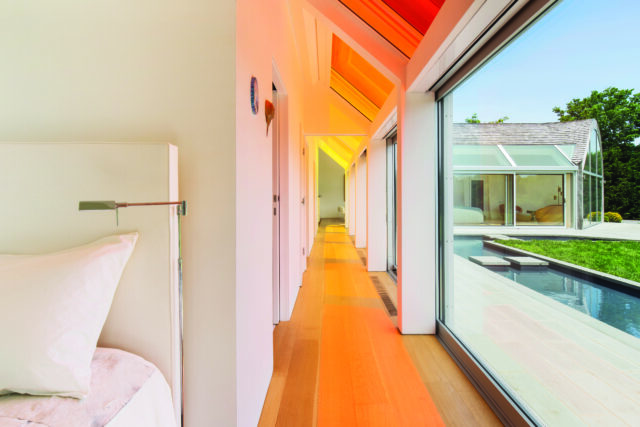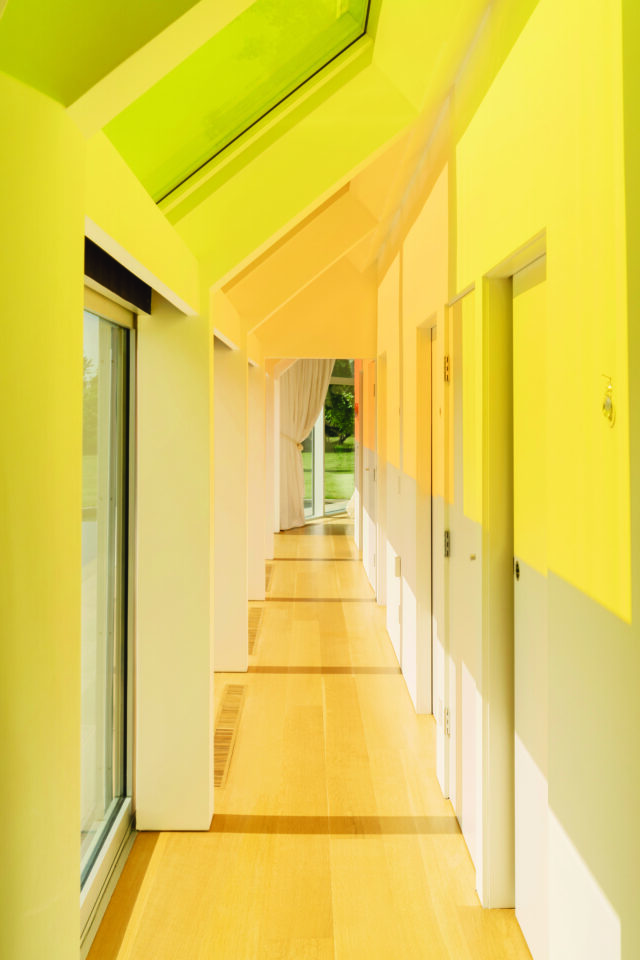
The drive toward energy-saving technologies poses new challenges to the architectural and design community. One of these is to ensure that solutions to current problems do not come at the expense of the emotional and social needs of their human audiences. People are unlikely to incorporate environmental architecture and design in their everyday lives if they do not find them attractive.
Can solar designs bring humans and the planet closer together? If so, how? More specifically, how can solar architecture embody sunlight in a way that is affective? We can find answers to these questions by looking beyond the limited technical function of environmental technologies used in projects such as Cocoon.
Solar design and architecture partake of a complex energy system in which commercial forces play a pivotal role. Though the solar industry aims first and foremost to generate energy, it is also prey to market pressures and the demands of corporate capitalism. As a result, architects and designers who work with renewable-energy systems tend to devise solutions that are cost-driven and technologically efficient. The design profession is also confronted with additional pressures, such as payback time and the push for spectacular effects made possible by digital technologies.
The problem is that when solar designs are financially and technologically determined from without, by outside forces, they can detract from the sun’s influence on human experience from within. To counter such a tendency, design should conform to Edmund Husserl’s horizontal perspective: “The Earth is a spherical body, certainly not perceivable in its wholeness all at once and by one person; rather it is perceived in a primordial synthesis as a unity of mutually connected single experiences.” According to this view, the Earth resists external mapping and planning of its surface and artifacts, asserting instead a “condition of flux” in accordance with a concept of the human body that Jan Patocka calls a “personal situatedness” among things: This dynamic cannot be fully grasped from a distance, as a movement we can observe from the outside, but must rather be grasped from within, as a situation that is always “mine.”

While the view from without is aerial and zooms down toward the local, the one from inside originates in the human and extends out toward the horizon. Therefore, eco-ethical and financial incentives alone, which are often imposed from without, cannot encourage the adoption of environmental technologies because they do not take the full human into account. This is why the solar industry attracts minimal attention from consumers, architects and designers. When transferring knowledge from science, some practitioners of Research by Design do not emphasize the role of the designer. By contrast, this book focuses on artistic agency, and, drawing on the theory of French philosopher Maurice Merleau–Ponty, proposes a way of designing with environmental technologies that stimulates mind and body together.
The discussion presented here revolves around the question of affect. However, affect theory is not yet a clearly defined field, and when applied to architectural design, it is usually done only in a superficial way. As historian of architecture and technology Antoine Picon points out, the digitally generated “affective” ornamental surfaces of much contemporary architecture offer a shallow sensual experience, but fail to stimulate the mind. However, the mediation of sunlight through solar cells could promote multisensory experiences while also heightening our awareness of design and architectural space in both a physiological and cerebral way. Such a mind-body connection would entail a shift in our understanding of sunlight, but if we are made to feel and see the rhythms of light and shadow through the filter of solar architecture, we might become more conscious of sunlight as a powerful natural process.
If solar architecture and design can stimulate the senses by modulating heat and light, they can also engage the faculties of memory and awareness of time to mediate between nature and technology, in ways that reveal, yet transcend, the physiological realm. In such cases, architecture or design can shape users’ perception so they experience sunlight in “green” architecture and design in a new manner. Cocoon House provides the context in which this transformation may occur.

This shift toward affect and away from the problematic way in which people often approach sustainable design is inspired by the philosophy of Merleau-Ponty and his definition of the scientific, the synaesthetic and the situational. As the Cocoon House is powered by solar cells, discussion centers on the capacity of architecture to activate those processes that relate specifically to the sun—namely, time, temperature, scale and material.
What makes an encounter between an artifact of technological design and a human an affective one? Our senses of time, temperature, scale and material are particularly relevant to solar design: The sun helps us tell time, emits heat and operates at multiple scales, from the molecular to the cosmic (the sense of sight is omitted here as a criterion to avoid an overly ocular-centric approach to design). Our sense of time can be awakened by seeing shadows cast in dynamic patterns, which can be electrically engineered by LED bulbs to synchronize with solar rhythms (one of the models used here automatically replays the passage of the sun at dusk). Solar design can sharpen our sense of temperature through thermal stimulation, and our sense of scale by connecting humans with local contexts. It can also heighten our sense of material by combining glossy new solar panels with contrasting materials, such as those that acquire a glassy patina over time (e.g., rust), assume a classical form (e.g., the cube or sphere), or are deemed organic or “primal” (e.g., wood or stone).
Solar design should thus aim to be more engaging and enduring—in short, to be more affective. By using photovoltaic material to collect the power of the sun, and by channeling daylight into interior and exterior spaces, solar design can enrich sensory and cognitive awareness, as well as facilitate connectivity between humans and the planet.
Excerpted from Cocoon House, courtesy of Artifice Press, London. Click here to pre-order.



